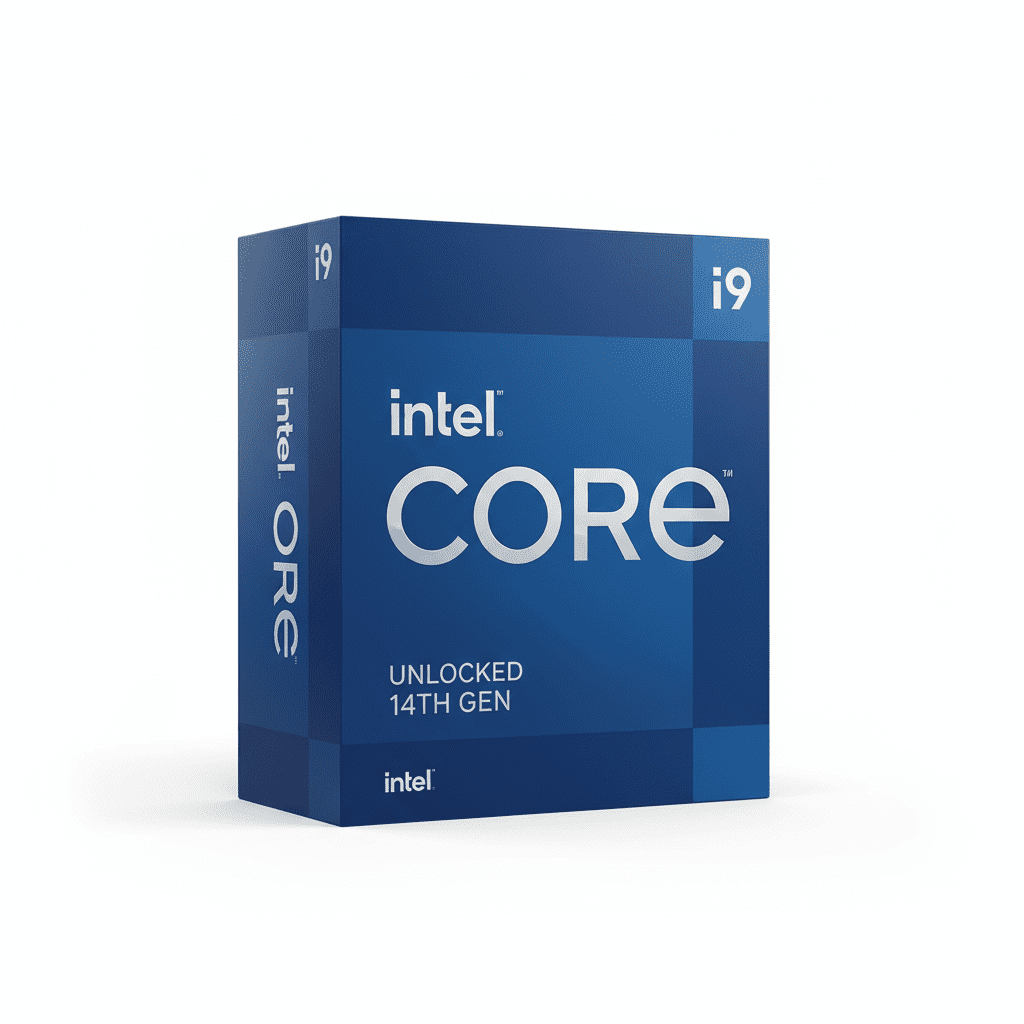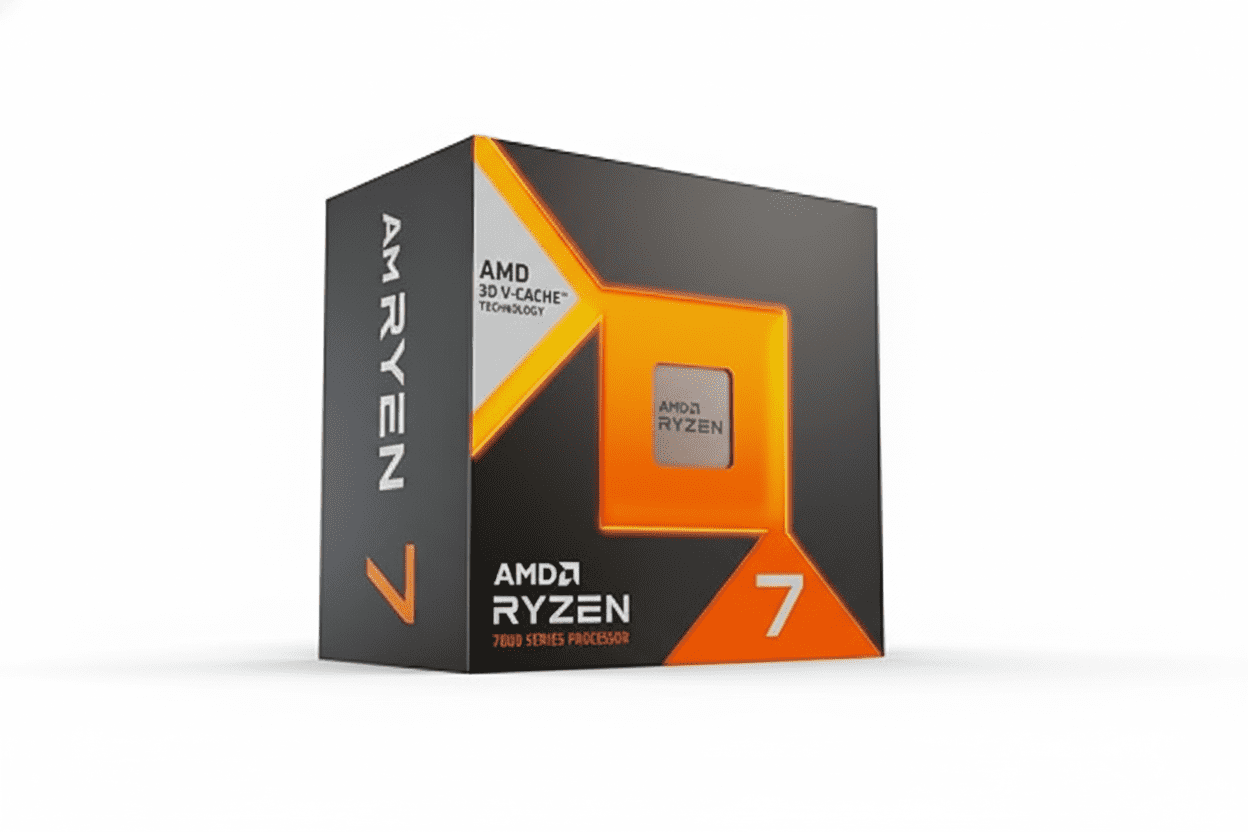
Intel Core i9-14900K Review: Ultimate Raptor Lake Refresh Gaming CPU
The Intel Core i9-14900K is a Raptor Lake Refresh processor with 24 cores (8 P-cores + 16 E-cores) and 32 threads for high-end desktops. Released in **2023**, it runs at 3.2 GHz base with turbo up to 6.0 GHz and integrated UHD Graphics 770, supporting DDR4/DDR5 on LGA 1700 motherboards. At 125W base TDP (up to 253W turbo), it’s unlocked for overclocking, ideal for gaming and content creation. Available for ₹55,999, it provides 35% savings off MSRP, delivering flagship performance in 2025.
Dominate Games and Workloads Today?
Unleash extreme power with the Core i9-14900K’s hybrid cores and 6.0 GHz boost for ultimate gaming!
Free delivery | EMI from ₹2,715/month | Non-Returnable | Top Brand
1. Core Performance: Hybrid Powerhouse
Flagship for 2025 gaming and creation.
24-Core Hybrid (32 Threads):
8 P-cores + 16 E-cores for balanced efficiency. The P-cores handle demanding single-threaded tasks like game logic and simulations, while E-cores excel at parallel processing for apps like video rendering or data analysis. This architecture, refined in the 14th gen, ensures your system stays cool and efficient even under heavy multi-tasking loads, making it a top pick for professionals and gamers alike.
3.2 GHz Base / 6.0 GHz Turbo:
Thermal Velocity Boost for peak speeds. Starting at a solid 3.2 GHz base, it ramps up intelligently to 6.0 GHz on P-cores during bursts, ensuring fluid performance in CPU-bound games or software compiles. Combined with Turbo Boost Max 3.0, this delivers consistent high frames in titles like Cyberpunk 2077 at ultra settings, while keeping everyday tasks responsive without unnecessary power spikes.
36MB Intel Smart Cache:
Turbo Boost Max 3.0 accelerates workloads. The expansive 36MB L3 cache acts as a high-speed buffer, feeding data directly to cores for reduced latency in memory-intensive operations like machine learning or 4K video exports. This results in up to 20% faster load times in applications compared to previous generations, giving creators and developers a noticeable edge in productivity workflows.
2. Graphics & Expansion: Modern Connectivity
Future-proof for high-end builds.
Intel UHD Graphics 770:
Integrated GPU for 4K and Quick Sync. This iGPU handles up to three 4K displays with ease, supporting hardware-accelerated encoding for faster video exports in tools like Adobe Premiere. It’s particularly useful for build validation or light creative work, offering DirectX 12 support for casual gaming at 1080p resolutions without a dedicated card, saving costs for entry into high-core systems.
LGA 1700 / Z790:
600/700-Series with BIOS update. The LGA 1700 platform supports a wide range of motherboards, from budget B760 to premium Z790 for overclocking, allowing flexible builds around this CPU. Compatibility with existing DDR4 setups means cost savings for upgrades, while full Z790 enables PCIe bifurcation for multiple high-speed devices, catering to gamers and creators expanding their rigs.
DDR4/DDR5 Support:
Up to 192GB dual-channel memory. This CPU bridges generations by supporting both DDR4 for affordable builds and DDR5 for cutting-edge speeds up to 5600 MT/s, accommodating up to 192GB for massive datasets in professional software. Dual-channel configuration doubles bandwidth, enhancing performance in memory-hungry apps like virtual machines or large-scale simulations, providing longevity for evolving system needs.
PCIe 5.0:
x16 + x4 Lanes for GPUs and NVMe. With PCIe 5.0 support offering up to 128 GT/s bandwidth, this processor enables ultra-fast storage and graphics cards, reducing load times in games and accelerating data transfers in creative pipelines. Backward compatible with PCIe 4.0, it future-proofs your setup for next-gen SSDs and RTX 50-series GPUs, ensuring top-tier I/O performance for years ahead.
3. Build Integration & Efficiency
Demands robust cooling for max performance.
125W TDP (253W Max):
Unlocked Multiplier for extreme OC. The power profile starts conservatively at 125W but scales to 253W during turbo, allowing overclockers to squeeze extra performance from compatible cooling setups like 360mm AIOs. This flexibility suits custom enthusiasts who prioritize raw speed over efficiency, though it necessitates a 850W+ PSU to avoid instability during prolonged high-load sessions.
Advanced Cooling Required:
High Thermal Limits need AIO or air cooler. Under full load, temperatures can hit 90°C+, so investing in a high-flow 240mm+ liquid cooler or premium air solution like Noctua NH-D15 is essential for sustained boosts. Proper thermal management not only prevents throttling but also extends component lifespan, ensuring reliable operation in hot Indian climates or overclocked configurations.
Windows 11 Optimized:
Thread Director for hybrid scheduling. Intel’s Thread Director intelligently assigns tasks to the right core type, maximizing efficiency in Windows 11 environments for everything from productivity apps to AAA games. This results in up to 15% better battery life in hybrid scenarios (though desktop-focused) and smoother multitasking, with support for AI features like Windows Studio Effects enhancing video calls and content creation.
Pros and Cons
Powerhouse with trade-offs for heat and cost.
Pros
- Extreme Performance: 24 cores for 4K gaming. Dominates benchmarks with top Cinebench scores and 144+ FPS in modern titles, making it ideal for ultra settings on high-refresh monitors.
- Unlocked Overclocking: Push beyond 6.0 GHz. Enthusiasts can achieve stable 5.8+ GHz all-core boosts with proper cooling, unlocking even more headroom for custom builds.
- DDR5/PCIe 5.0: Future-proof expansion. Supports next-gen memory and storage for faster boots and transfers, preparing your system for upcoming tech advancements.
- Integrated Graphics: UHD 770 for quick tasks. Handles 4K media and light edits efficiently, serving as a reliable fallback until you add a discrete GPU.
- 35% Savings: Value at ₹55,999. Substantial discount from MSRP makes flagship power more accessible without sacrificing quality.
- High Thread Count: 32 threads for creation. Excels in multi-threaded software like Blender or Premiere, speeding up renders by up to 30% over mid-range CPUs.
Cons
- High Power Draw: 253W turbo needs strong PSU. Demands at least 850W gold-rated supply, increasing overall build costs for stable operation.
- Intense Heat: Requires premium cooling. Can throttle without adequate airflow, pushing extra ₹5,000-10,000 for effective thermal solutions.
- Premium Price: ₹55,999 for top-tier only. Not ideal for budget builds, as gains diminish in lighter tasks compared to cheaper i7 options.
- BIOS Updates Needed: For 600-series boards. Potential compatibility hiccups require technical know-how or professional help.
- No Cooler Included: Extra cost for AIO. Forces additional purchase of ₹4,000+ cooling, raising entry barrier for new builders.
- Non-Returnable: Verify compatibility. Amazon policy means double-checking mobo and PSU before buying to avoid issues.
Who Is This Processor For? Tailored Recommendations
The Core i9-14900K suits:
- Enthusiast Gamer: 4K/1440p at high FPS. Perfect for running ray-traced games at max settings with DLSS, paired with RTX 4080+ for buttery-smooth 120Hz+ experiences.
- Content Creator: Video editing and 3D rendering. Accelerates timelines in DaVinci Resolve or Maya, handling 8K exports and complex scenes with ease thanks to high core counts.
- High-End Builder: Overclocking setups. Ideal for custom water-cooled rigs where pushing clocks beyond stock yields benchmark-topping results in Cinebench or gaming suites.
Who Might Consider Other Options?
- Budget Users: Opt for i5/i7 series. If under ₹30,000, the i5-14600K offers 80% performance for casual gaming without the power overhead.
- Efficiency Seekers: AMD Ryzen 9 alternatives. For lower heat and better multi-core value, Ryzen 7950X3D provides similar gaming prowess at reduced TDP.
- Laptop Needs: Mobile processors instead. Go for H-series chips like i9-14900HX for portable power without desktop-level cooling requirements.
Competitive Edge: What Sets It Apart
Tops charts in single/multi-threaded tasks.
- Vs i7-14700K: Extra E-cores for 20% multi-thread gain. The additional efficiency cores shine in rendering and streaming, outperforming the i7 by handling more simultaneous tasks without slowdowns.
- Vs Ryzen 9 7950X: Better gaming IPC with higher clocks. Excels in frame-rate sensitive games due to superior single-core speeds, often edging out AMD in esports titles by 10-15 FPS.
- Value Proposition: 35% off MSRP for flagship power. At this price, it undercuts competitors while offering integrated graphics and broad compatibility for versatile builds.
- Integrated Graphics: Outperforms AMD in iGPU tasks. UHD 770’s Quick Sync beats Radeon iGPUs in video transcoding speeds, useful for creators without a dedicated card.
Full Specification Details
General Information
- Price (Starting): ₹55,999
- Model: Core i9-14900K
- Architecture: Raptor Lake Refresh
- Launch Date: Q4 2023
Processor & Cache
- Cores/Threads: 24 (8P + 16E) / 32
- Base/Boost Clock: 3.2 GHz / Up to 6.0 GHz
- Cache: 36 MB Smart Cache
Power & Thermal
- TDP: 125W Base / 253W Turbo
- Unlocked: Yes
- Cooler Included: No
Connectivity & Memory
- Socket: LGA 1700
- Chipsets: 600/700-Series
- Memory: DDR4/DDR5 Up to 192GB
- PCIe: 5.0 x20 Lanes
Graphics & Other
- iGPU: Intel UHD Graphics 770
- Process: 10nm
- Customer Rating: 4.3 Stars (3,537 Reviews)
- OS Support: Windows 11 Home/Pro
Compatibility
- Motherboards: Z790/B760/H770
- RAM: DDR5-5600 / DDR4-3200
- USB: USB 3.2 Gen 2×2 (Via Board)
Final Verdict
The Intel Core i9-14900K remains a beast for demanding tasks, perfect for enthusiasts despite power demands in 2025. With its hybrid core magic, blistering speeds, and expansive features, it earns top honors for high-end performance seekers who can manage the thermals.
Ultimate for gaming and pro workflows.
